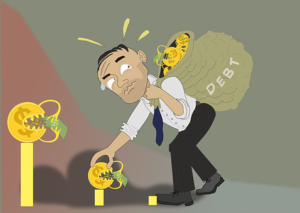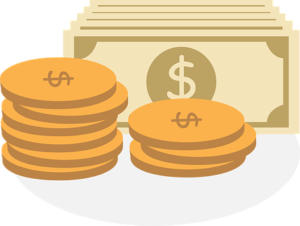Unsecured Loans 101: What You Need to Know Before Borrowing

When life throws unexpected expenses your way, an unsecured loan might seem like a tempting lifeline. Whether it’s for home repairs, medical bills, or consolidating debt, the allure of quick cash can be difficult to resist. But before you apply for a pikalaina, it’s essential to understand what you’re getting into.
Unsecured loans come with their own set of challenges and considerations that could impact your financial future. While they offer convenience and accessibility, they also carry risks that can lead to long-term consequences if you’re not careful. So, let’s break down the critical aspects of unsecured loans so you can make informed decisions when it comes time to borrow.
Higher Interest Rates
One of the first things to consider with unsecured loans is the higher interest rates that often accompany them. Unlike secured loans, where your asset acts as collateral, unsecured loans lack this safety net for lenders. As a result, they compensate for the increased risk by charging more in interest. This can lead to significantly higher monthly payments over time. Even if you’re approved quickly and easily, those rising costs can catch you off guard later down the line. It’s essential to compare offers from various lenders. A small difference in interest rates might seem insignificant at first but could add up dramatically over the life of the loan.
Stringent Credit Requirements
When considering an unsecured loan, understanding credit requirements is crucial. Lenders typically assess your creditworthiness before approval. This process ensures that borrowers can repay the amount borrowed. A strong credit score increases your chances of securing a loan with favorable terms. Conversely, lenders may deny your application outright if your score is low or offer less attractive rates. Many lenders also evaluate other factors like income stability and employment history. They want assurance that you can manage repayments without defaulting.
Potential for Debt Accumulation

Unsecured loans can be tempting. They offer quick access to cash without collateral. However, this ease of borrowing often leads to overspending. When assets do not tie you down, it’s easy to lose track of how much debt you’re accumulating. The thrill of getting funds quickly might overshadow the reality of repayment. Many borrowers underestimate how multiple loans can stack up. Each new loan adds another monthly payment and increases financial pressure. It’s a slippery slope that can lead to serious financial strain.
Impact on Credit Score
Taking out an unsecured loan can significantly impact your credit score. When you apply, lenders perform a hard inquiry on your credit report. This can lead to a temporary dip in your score. Timely payments improve your credit over time, but missed or late payments will hurt it further. With no collateral backing the loan, missing payments puts you at risk of higher penalties and fees. Utilization is another factor to consider. If the unsecured loan increases your overall debt load, this could negatively affect your debt-to-income ratio.
Furthermore, while unsecured loans provide immediate cash access, they can lead to debt accumulation if you’re not cautious. It’s easy to fall into a cycle of borrowing more as expenses arise, making it challenging to pay off previous debts. Keep an eye on how these loans impact your credit score. Missing payments or defaulting can have long-lasting effects on your financial health. Taking out an unsecured loan requires thoughtful consideration and planning. Arm yourself with knowledge before making any decisions regarding borrowing money without collateral.…


 Virtual credit cards have revolutionized the world of online payments. By allowing customers to create one-time use numbers for specific transactions, these cards help reduce the risk of fraud and keep confidential personal information safeguarded.
Virtual credit cards have revolutionized the world of online payments. By allowing customers to create one-time use numbers for specific transactions, these cards help reduce the risk of fraud and keep confidential personal information safeguarded. FIDO (Fast IDentity Online) technology is another innovative development that has been incorporated into many credit cards. It utilizes two-factor authentication to offer customers more secure payment methods. Customers have the option of using a traditional password or PIN as well as biometric authentication, such as their fingerprints and facial recognition, to confirm their identity. This technology has made it easier for card issuers to detect fraudulent activities and protect customers from potential security threats.
FIDO (Fast IDentity Online) technology is another innovative development that has been incorporated into many credit cards. It utilizes two-factor authentication to offer customers more secure payment methods. Customers have the option of using a traditional password or PIN as well as biometric authentication, such as their fingerprints and facial recognition, to confirm their identity. This technology has made it easier for card issuers to detect fraudulent activities and protect customers from potential security threats.




 You should note that private loan lending firms are faster as compared to banks. For instance, the processing can be carried out within 2 days. This is a considerable difference knowing that banks can take more than a month to process your loan. In addition, this offers you less hassle, no lengthy board meetings, minimal underwriting, and no endless questions. The following are some factors to consider when looking for a dependable and reputable money lender.
You should note that private loan lending firms are faster as compared to banks. For instance, the processing can be carried out within 2 days. This is a considerable difference knowing that banks can take more than a month to process your loan. In addition, this offers you less hassle, no lengthy board meetings, minimal underwriting, and no endless questions. The following are some factors to consider when looking for a dependable and reputable money lender. Ensure you review the portfolio of investors before you choose a money lending company. If it has more investors, the better. You should note that these companies bring in investment companies or investors that act as private lenders to the specific parties. The investors not only offer you an option for loan structuring but provide you with an adequate loan to cover your medium-term and long-term loans.
Ensure you review the portfolio of investors before you choose a money lending company. If it has more investors, the better. You should note that these companies bring in investment companies or investors that act as private lenders to the specific parties. The investors not only offer you an option for loan structuring but provide you with an adequate loan to cover your medium-term and long-term loans.
